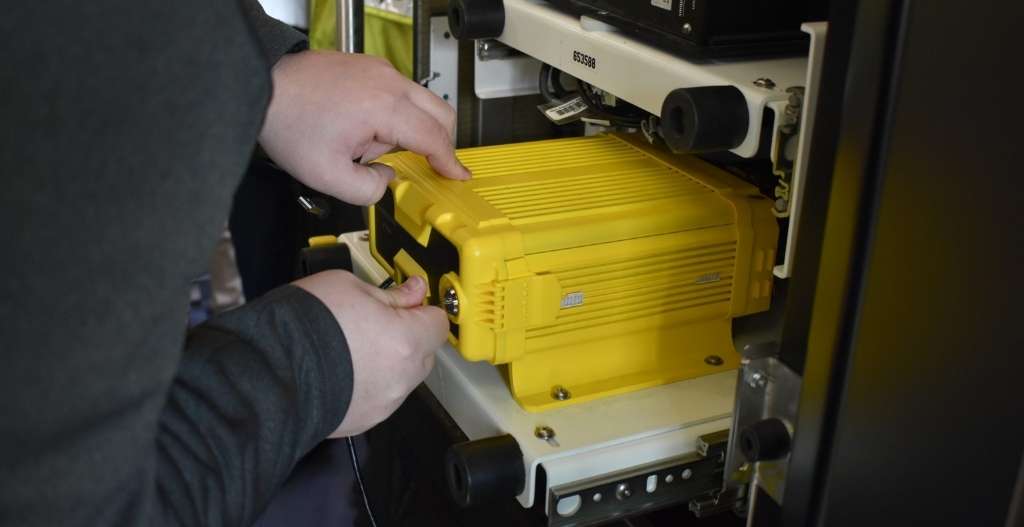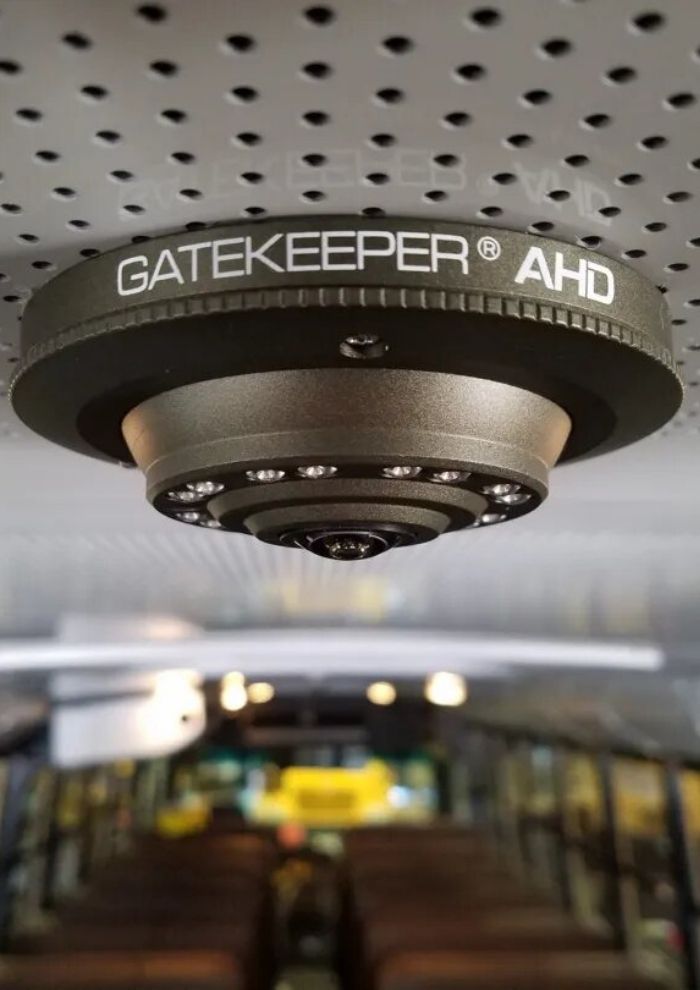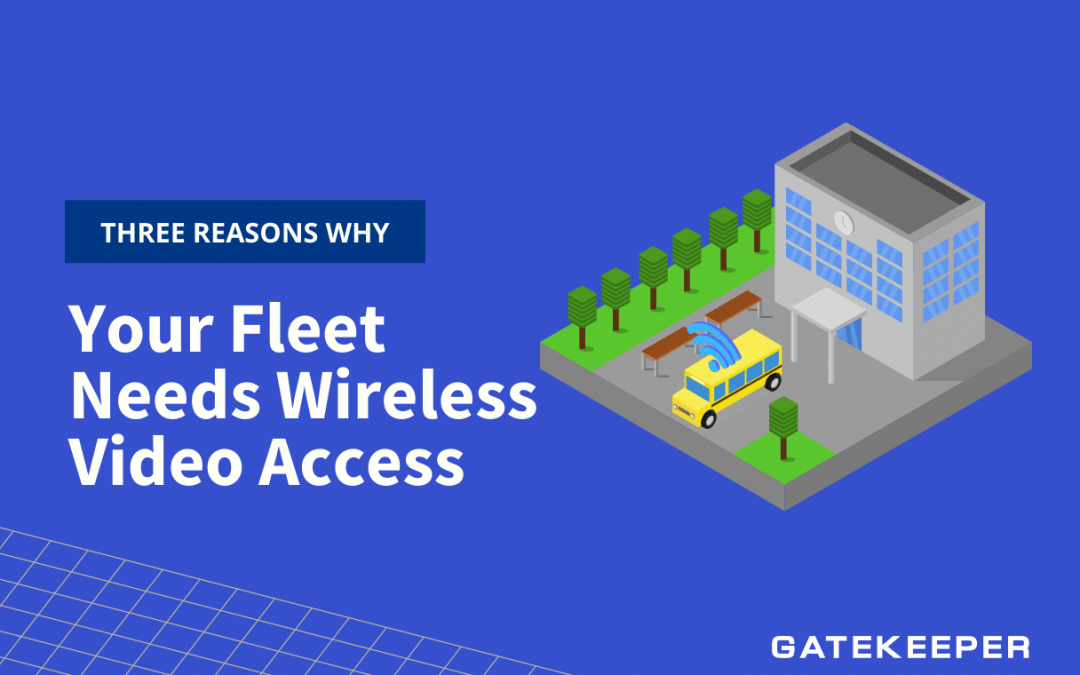The benefits of using video surveillance solutions on buses have been proven out to the point that it’s rare to step onto a city bus or school bus that doesn’t have one.
Buses that have recorded video protect passengers and operators, reduce false liability claims and create faster resolutions.
The added safety and savings that video provides makes it essential for efficiently managing fleets.
But, bus video management has also had one bottleneck. Before wireless downloading, data retrieval meant physically pulling hard drives from buses.
This is a process that’s time-consuming and and puts the system at risk.
There is the potential for damage each time a hard drive needs to be pulled, and it can be hard to know one is compromised until it’s too late.
The ability to have wireless access to footage saves time but also adds extra layers of safety and efficiency.
The benefits of using a wireless video access system
While video surveillance on buses helps make managing fleets more efficient, it’s entirely dependent on the system working and capturing footage.
Hard drives that need to be physically removed to access data are at risk of damage, being misplaced or re-installed improperly.

No more missed footage with wireless video access
Every time a hard drive has to be pulled from a bus, it is at risk for damage or human error.
Hard drives can be dropped, bumped or simply misplaced in between getting removed and re-installed.
Without wireless access to footage, it’s also difficult to even know if a hard drive has been compromised or installed incorrectly.
One of the biggest benefits of a system that can deliver wireless access is that you can check on the health of your system in real-time.
A video surveillance solution only works if it’s capturing footage and wireless downloading lets fleet operators know quickly and easily that their systems are working.
Wireless access saves on costs
Pulling hard drives is a time-consuming process. Locating buses, staff travel time to and from each bus – these all add up in costs over the course of months and years.
The ability to retrieve data over a wireless network saves on operation costs and streamlines the process.
As soon as buses pull into range of the wireless network, their hard drives can be accessed and footage can be downloaded before they’ve even parked.
Wireless downloading also saves more than just labor costs.
Missing footage can be a devastating event. If a false claim is made and the exonerating footage is missing, disputing the claim can become exponentially more difficult and costly.
Using a system that can deliver wireless access to footage protects against system failures and human error.
If a hard drive has not been re-installed correctly or has been damaged at some point, wireless access provides fleet operators with the ability to know before it’s left the yard.

Added passenger and driver safety
One of the most important reasons for using video surveillance on city and school buses is the extra safety that it provides passengers and operators.
Incidents are recorded and the responsible parties are held accountable for their actions.
Violence, vandalism and theft can all be reduced with a video surveillance solution.
Video footage can provide indisputable evidence and make resolutions faster and better.
It’s harder to argue about who did what when it’s been captured from multiple angles in high definition.
For buses that use external cameras, unsafe drivers can also be held accountable.
But this all hinges on the fact that the system is working correctly.
Without the ability to remotely monitor the health of any given system in a fleet, it’s impossible to know if it’s actually recording.
Without the proper footage, it becomes a lot more difficult to find satisfying resolutions.
A system with wireless access eliminates this variable.
The ability to know that all systems are working and recording helps make buses a safer environment.

Choosing the right wireless solution
The are multiple wireless video access systems available, and they all have their pros and cons.
Gatekeeper’s Wireless Access is an excellent choice because it offers a suite of integrated solutions that can be customized depending on the needs of a given fleet.
Video can be set up on buses to download upon arrival, either as a prescheduled event or activated by a driver pressing an alert button when an incident occurs. There is also an option for live streaming video over a cellular network.
Retrieving video is simple and can be integrated with Gatekeeper’s video management platform – G4 Vision.
The status of the on-board DVR’s and camera system can also be monitored automatically with the optional Health Check feature.
The simple, cloud-based application instantly alerts if a video system is vandalized or not operating properly.
Gatekeeper’s wireless solutions offer a comprehensive set of tools that are simple enough to use that a single employee can manage video retrieval and management for an entire fleet.
Never miss another incident, save on costs and make buses a safer place for passengers and drivers with a wireless video management.





